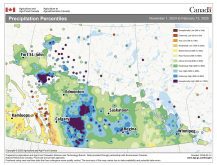There could be an opportunity to move Canadian grain to the West Coast through the American rail system this winter.
Soybeans that are usually flowing to ports in the United States Pacific Northwest at this time of year are parked on farms as the tariff trade war between the U.S. and China escalates.
The two superpowers will soon have tariffs on about US$360 billion worth of goods. One of the products caught in the crosshairs is U.S. soybeans, which now face a 25 percent import tariff in China.
Read Also

Farm groups ask feds for export sales reporting
The Agricultural Producers Association of Saskatchewan and SaskCrops asks the federal government to create an Export Sales Reporting program.
That has shut down U.S. soybean trade with China. Soybeans from North Dakota, South Dakota, Nebraska and western Minnesota are no longer moving to the West Coast, said Dale Ihry, executive director of the North Dakota Corn Growers Association.
“From what we hear, very few if any trains are being loaded up and going out to the Pacific Northwest,” he said.
“Farmers are scrambling on where to put their soybeans and generally trying to find storage.”
Growers are having a difficult time finding enough grain bins. Some farmers are using white bags to store their soybeans.
Soybean prices have crashed. Farmers in North Dakota are getting $6.70 per bushel for new crop soybeans, down from about $9 the last couple of years. The basis ranges from -$1.70 to -$2 per bu.
“That is a big negative for the soybean market,” said Ihry.
With no soybeans moving to the West Coast there are shipping opportunities for other crops. He said more corn than usual is heading West. And there is plenty to move as U.S. farmers harvested the second biggest corn crop on record.
Bruce Burnett, director of markets and weather with Glacier’s MarketsFarm, said there is potential for Canadian shippers to take advantage of the extra capacity on the U.S. rail system.
“I don’t have the particular sense that we need to do that at the moment right now because exports have been moving relatively well,” he said.
“But there is winter yet to come.”
Burnett expects U.S. railways will be looking for business north of the border to fill the soybean void but it’s not as straightforward as moving grain on Canadian rail lines to Canadian ports.
“There are some logistics involved, especially when you’re trying to sell Canadian wheat from an export inspection point of view,” he said.















